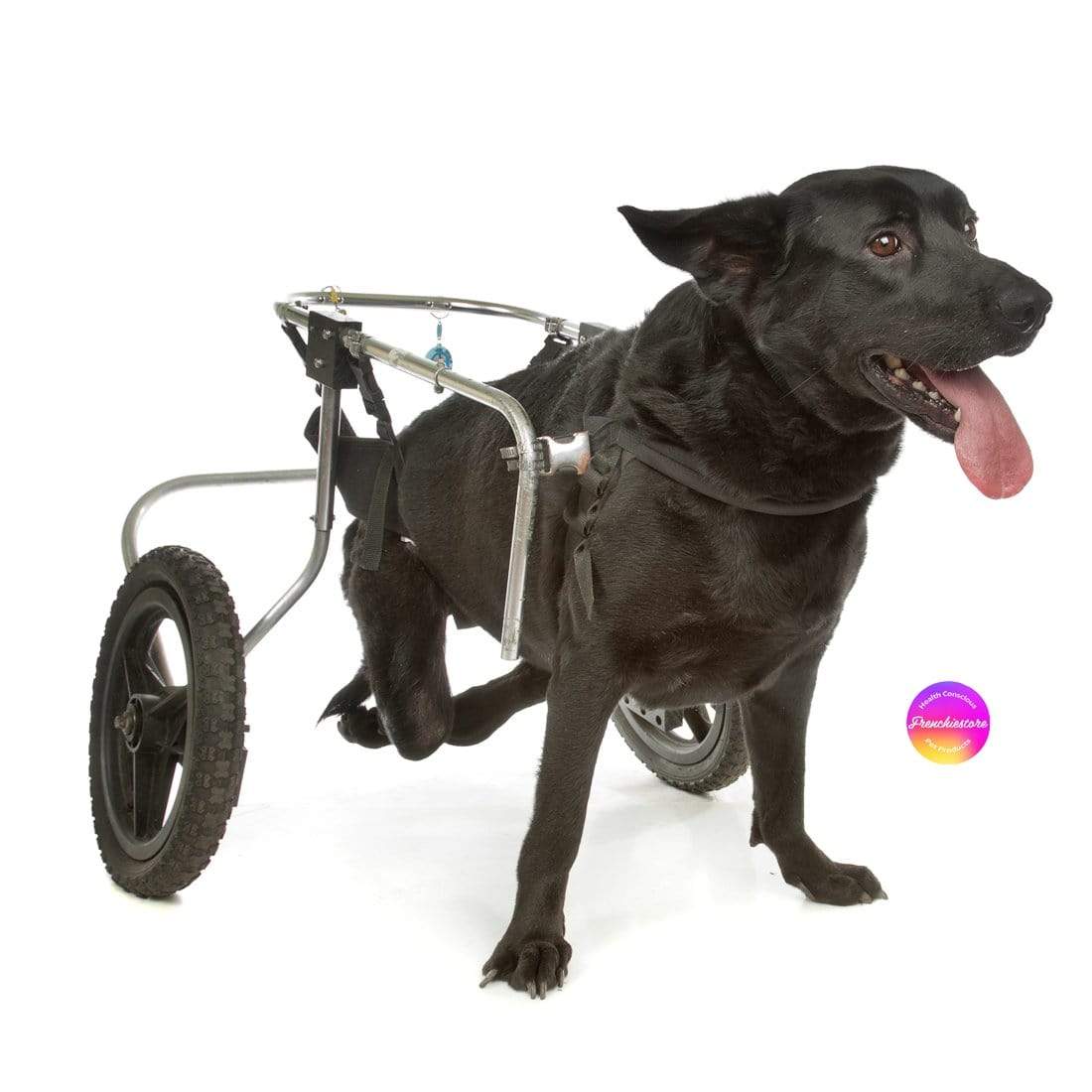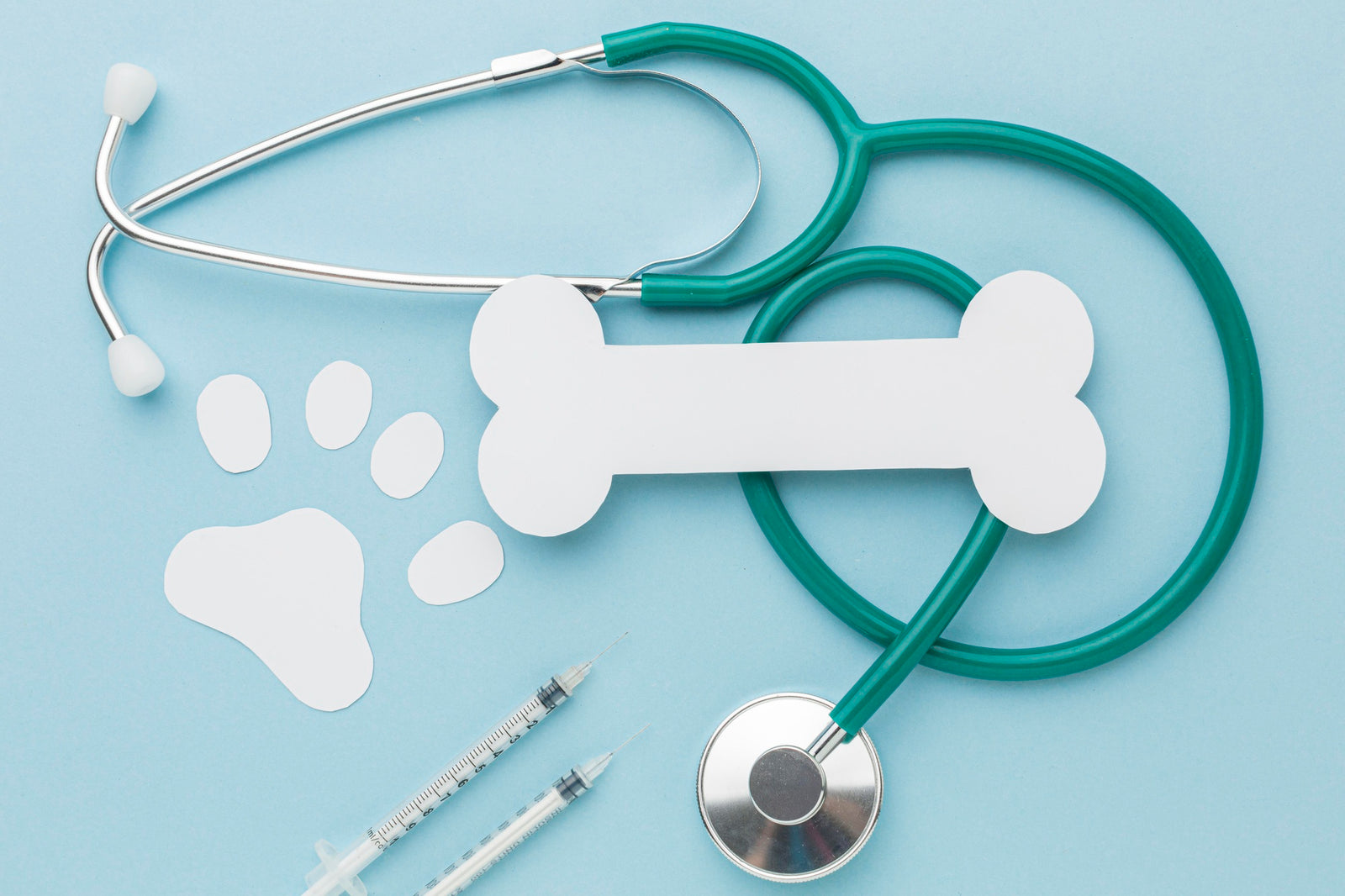Your Cart is Empty
🔥 CLOSE OUT SALE 🔥50% OFF sitewide use code clear final sale, no returns or refunds
🔥 CLOSE OUT SALE 🔥50% OFF sitewide use code clear final sale, no returns or refunds
🔥 CLOSE OUT SALE 🔥50% OFF sitewide use code clear final sale, no returns or refunds

Here’s an uncomfortable truth. Sometime in your dog’s life, you will probably have to deal with some mobility issues. Studies show that at least 1 in 5 dogs will experience some sort of joint problem during their lifetime. This is why it is important for you to understand what mobility problems in dogs are and what you can do about them. In this pawsletter, we will explain what types of mobility conditions you can look out for in your dog and how to tell if you should be concerned. You’ll also learn how mobility problems can affect your Frenchie and what kind of treatment options are available.
There are a lot of different causes in dog mobility issues. Your dog can develop mobility problems from a wide range of conditions such as weight, injury, or simply natural aging process etc. Although the problems are mostly associated with older dogs, it is not uncommon to see younger dogs also affected by mobility problems. In some cases, these conditions will be quite painful and in some others, your dog will have trouble moving properly and yet be free from pain. Here are some of the common conditions that can lead to mobility problems in dogs:
Dogs can develop mobility problems due to certain birth defects such as spinal defects. Some of these include spina bifida and spinal stenosis. These defects can lead to mobility problems even in very young dogs. Spina bifida particularly occurs due to incomplete fusion of vertebral arches while your dog is an embryo. This causes the vertebra to be incomplete. It is mostly seen in the lower back although, it can occur anywhere along the spine. Spina bifida most often affects English bulldogs.
Damage to your dog’s brain as a result of stroke, seizure or meningoencephalitis can lead to neurological disorders that produce issues with your dog’s ability to walk or stand.
This is one of the congenital diseases that effects the spinal cord over time even though this may not be apparent. IVDD stands for Intervertebral Disc Disease and it mainly affects dogs with abnormally short legs, like Dachshunds or French Bulldogs etc. (long list below) . The disease occurs when the intervertebral discs between vertebrae rupture and burst into the spinal cord space. This causes the discs to press on nerves that run through the spinal cord, leading to paralysis.
In most cases of IVDD the dog appears to be completely healthy and then the next day in acute pain. This is due to a degenerative process of a disc that has already been weakened by IVDD gradually. Any jump or fall of the dog can damage the spinal vertebrae severely and suddenly. IVDD symptom of disc hardening can cause disc bulges and compression the spinal cord. In addition to the possibility of paralysis, the compression the spinal cord and nerves may impair bladder and bowel control.
HOW TO EXPRESS MY DOG'S BLADDER?
Watch the video below made by South Paws Veterinary Surgical Specialists:

Figure 1: Normal Canine Spine Figure 2: Canine Spine with IVDD
Copyright image owner: Hill’s Pet Nutrition, Inc.
WHAT BREEDS ARE MORE PRONE TO IVDD?
Please note - Overweight dog of any breed is more likely to get IVDD. Also there are other breeds that are susceptible to IVDD even though they are not a small breed such as German Shepherds, Labrador Retrievers and Doberman Pinschers. It is important to remember IVDD can happen to any dog and is not breed or size specific.
DIAGNOSIS:
Diagnosis tests by your vet may include the following:
TREATMENT:
The treatment course will depend on the severity of the injury. Treatment for mild to moderate injury may be limited to steroids injections and anti inflammatory medications for pain reduction and swelling as well as crate rest. In dogs with severe injury a surgery may be the only option. Surgery has better success rates if the dog is taken to a vet right away (within 24 hours) and has not lost the ability to walk prior to surgery. The prognosis is not optimal for a dog that became completely paralyzed prior to surgery. physical rehabilitation or water therapy is often recommended post op. If the surgery is not successful your vet will most likely recommend a dog wheelchair. A wheelchair can give your dog a healthy and happy life.
PREVENTION:
We recommend the following in order to minimize the risks of IVDD:
Also called spondylosis deformans. This is a degenerative condition that occurs along the spine and often occurs in older dogs. Occurs when degenerative discs cause bone spurs to form along the vertebrae connected and forming bridges that limit the dog’s ability to move.
One of the leading causes of paralysis in dogs, arthritis mostly affects older dogs. Despite this, it can affect pretty much any dog of any age. The disease is a progressive and painful degeneration of joint function that is aggravated by exercise or cold weather. Your dog’s weight will often play a large part in how painful the disease will get.
This may be hip or elbow dysplasia. The hip condition occurs when your dog’s hip joints are improperly formed. Usually, the hip is formed of a ball and socket joint that should fit perfectly together. But due to this condition, the ball is either irregularly shaped or the socket is too shallow, keeping the ball and socket from fitting perfectly. The condition can only be inherited.
In some cases, malignant tumors in your dog’s spine can lead to mobility issues. Although the symptoms of paralysis when caused by tumors occur at a slower rate, they can be life threatening. Since they are malignant, if even a trace of these tumors remains in your dog’s body, they can affect his/her nervous system.
Injury to joints resulting from accidents or trauma can cause mobility issues. These are often temporary though, unless the injury particularly affects the motor area. If it does, there may be permanent, and sadly, irreversible damage.
You may not know this, but tick bites are one of the leading causes of mobility issues in dogs. When they bite, some species of tick inject a neurotoxin that can cause sudden paralysis. If you leave it untreated, the paralysis will spread and may become fatal.
There are signs that you can look out for, however, the plain truth of it is that it is often difficult to tell until the condition has become pronounced. This is because dogs are naturally stoic. They rarely show pain or discomfort until they are really suffering. Thankfully, vets have become attuned to the natural behavior of dogs, so they can tell much earlier if your dog has a problem.
How do you know what to look out for?
If you notice any of these symptoms, get your dog to be seen by his/her vet. If there is nothing wrong, you can relax knowing that your dog is okay. If you find a problem, you can be thankful that you discovered it early enough. In no event we recommend ignoring the above symptoms.
The vet will first examine your dog’s movement to test mobility, response to reflex tests and ability to feel pain in his or her legs. They may use a special x-ray called a myelogram to check the spinal cord for irregularities with the vertebrae. They will go over the history of the dog with you, as this can provide pointers as to what may likely be wrong. They will also carry out some tests to try and isolate the specific problem. Such tests may include a complete diagnostic blood test, urinalysis and biochemistry profile. These will help the vet determine if there are any infections or imbalances causing or contributing to the mobility issues.
There are many that consider lameness in a dog to be the beginning of the end but it most definitely does not have to be that way. Dogs are resilient and will find a way even if they cannot walk, sit, lie or stand well. It is important to mention that if mobility issues left untreated, the conditions may progress and eventually lead to paralysis.
Terms of paralysis:
Thankfully, the conditions that lead to mobility problems in dogs are not irreversible in all cases. Even the ones caused by birth defects can be managed properly, and even treated. The following are some treatment options for your dog’s mobility problems:
After undergoing treatment for mobility issues, you can help your dog bounce back stronger by taking the following recovery measures:
Remember that your dog’s welfare should always be your priority. Dogs can't talk so they are not able to say when they are not feeling well. It is our responsibility to be well aware and in tuned with our fur babies. Being able to recognize a problem as it is happening is crucial for leading a healthy life. We hope you learned from reading or listening to our voice over and as always if you have comments questions or helpful tips from personal experiences leave them below.
Comments will be approved before showing up.



Helpful information on the French Bulldog dog breed.
We will also notify you with new releases and special offers.
Informational posts about French Bulldogs. Tips and helpful advice on the Frenchie breed and other breeds.
Sign up to get information & expert advice about pets' health and safety. We will also notify you with new releases and special offers.